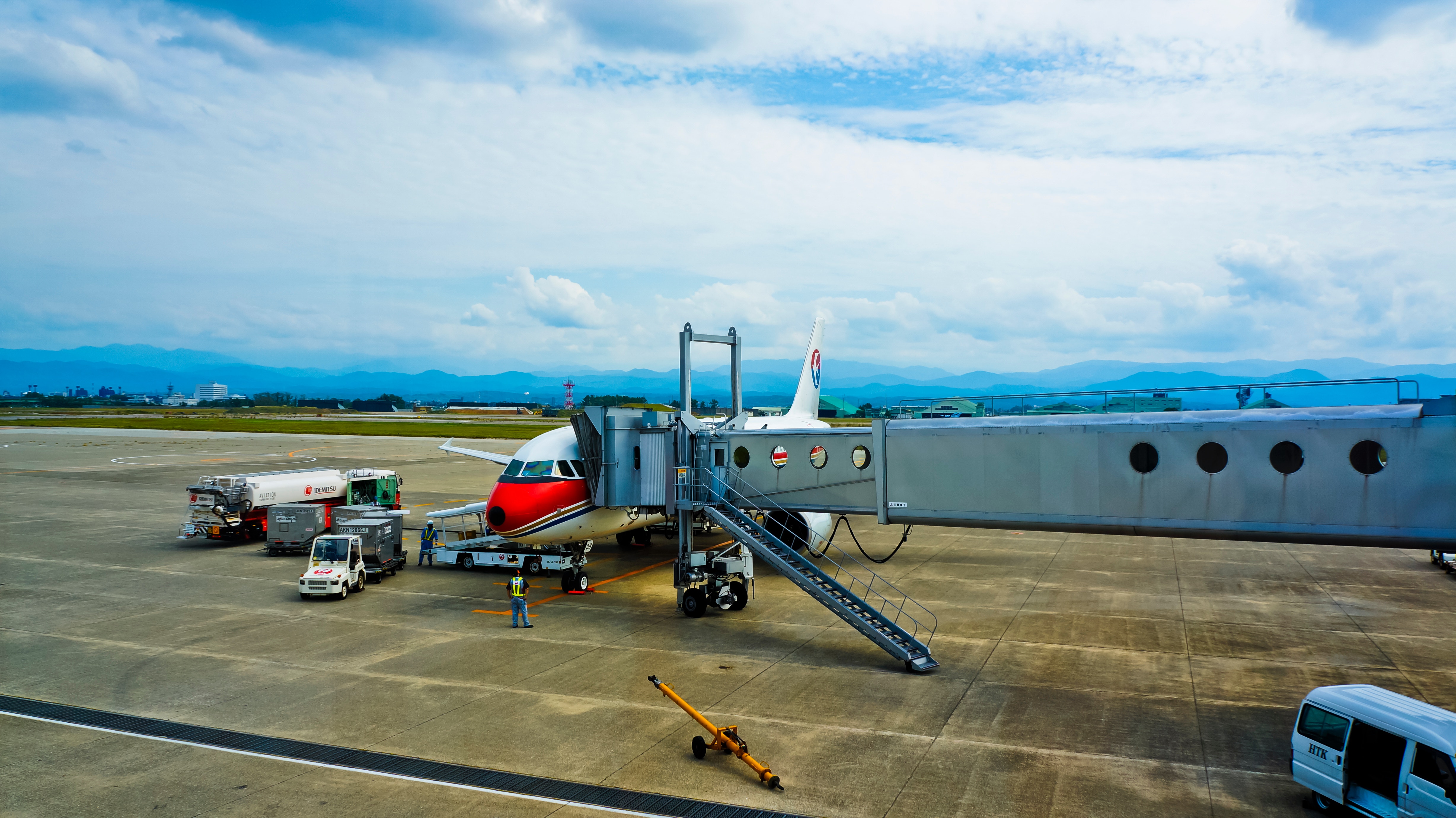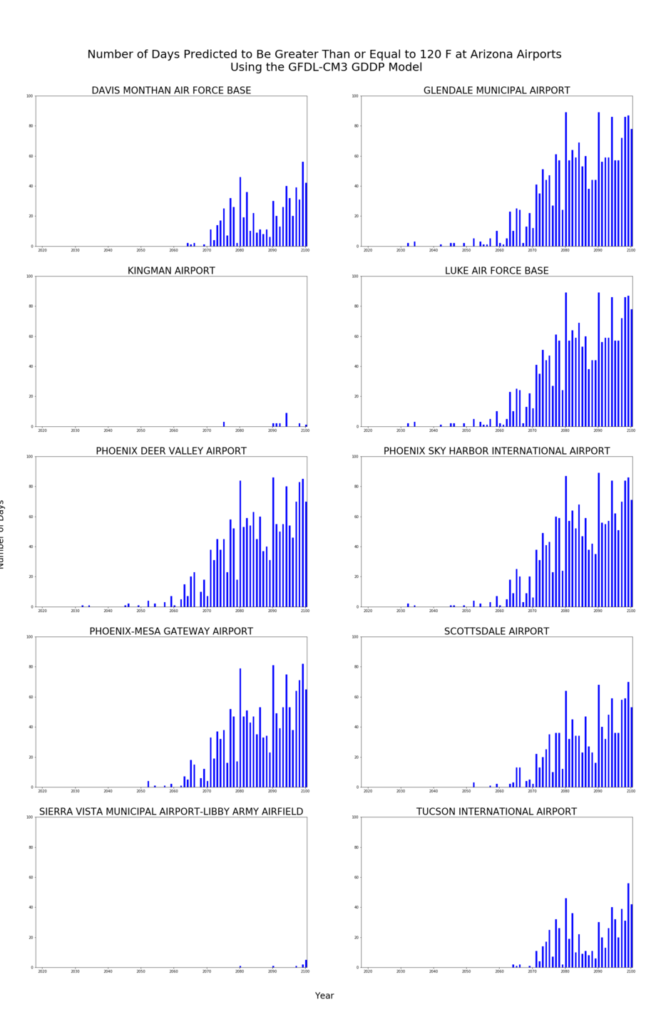Extreme heat can prevent airplanes from taking off and landing safely. Most commercial airports aren’t designed to operate on excessive heat days, temperatures beyond 120° Fahrenheit (49° Celsius).

In June of this year, airports in Nevada and Arizona were forced to cancel more than 50 flights because temperatures exceeded the safe operating limits of several aircrafts.
Global temperatures are expected to rise. It seems reasonable to assume that this will increase the number of airports that are at risk of temperature-related cancellations. There are several models and methods for projecting temperature and other climatic variables that can help predict these effects.
The NASA Earth Exchange (NEX) Global Daily Downscaled Projections (NEX-GDDP) dataset includes climate projections from 2006 to 2100. This dataset is well known in the climate science community. However, working with it can be challenging because of its size. Earth on AWS hosts copies of it, but the entire dataset is over 12 terabytes. Running a time series analysis on data of this scale is difficult or impossible to complete locally on a single desktop computer. However, with access to the dataset and processing power through cloud services like AWS, it is possible to run this analysis remotely from any computer.
A team at Azavea used publically available climate projection models to answer the question, “What airports in Arizona are at risk of having temperatures above 120 Fahrenheit that could cause planes to be grounded? And how many days per year have such a risk?”
Preliminary results show that there are ten airports in Arizona that will be at risk of grounding planes due to temperatures that exceed 120° Fahrenheit through 2100:
- Davis Monthan Air Force Base
- Glendale Municipal Airport
- Kingman Airport
- Luke Air Force Base
- Phoenix Deer Valley Airport
- Phoenix Sky Harbor International Airport
- Phoenix-Mesa Gateway Airport
- Scottsdale Airport
- Tucson International Airport
- Sierra Vista Municipal Airport at Libby Army Airfield
Here are the resulting graphs of the analysis showing numbers of days per year through 2100 that each location can expect a daily maximum temperature of 120° Fahrenheit or greater.
Based on the daily maximum temperature dataset from the GFDL-CM3 model, by 2050, six airports in Arizona will begin to experience several days with a maximum temperature above 120° most years. By the end of the century several airports, including two of the busiest in the state – Sky Harbor International and Phoenix-Mesa Gateway – can expect to see more than eighty days with a maximum temperature above 120 degrees every year.
This analysis does not represent a full scientific study, but rather was an exercise in using the GDDP dataset to ask concrete questions about the impacts of climate change. GFDL-CM3 may not be the model best suited to Arizona. Our present goal is to create the tools that will make it easier to pose questions like this and query these large datasets. Read a full scientific study with a comprehensive methodology here. It was written by a team of research scientists at Columbia University in 2015 investigating the effect of extreme heat on aviation.
To support the analysis, we used GeoPySpark – Python bindings for Geotrellis – to analyze the large dataset relying on AWS EMR services. We are currently working on completing documentation and tutorials that will enable Python developers to complete a similar analysis. We have plans to publish more blogs focused on comparable analytical questions. Stay tuned – and reach out if you have any questions.
This analysis is part of a project that is supported by the Small Business Innovation Research (SBIR) program of the U.S. Department of Energy, Office of Science, Award Number DE-SC0011303.
To learn more about the climate change indicators Azavea is making publicly available, please visit https://climate.azavea.com

